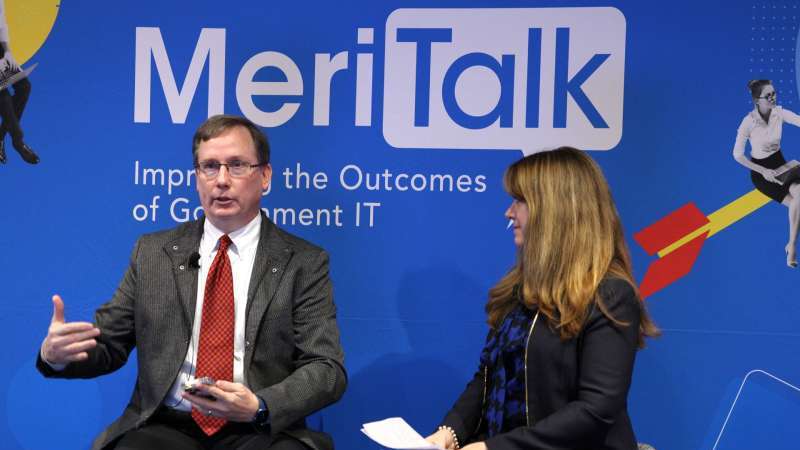
Tim Persons, founder of the Government Accountability Office’s (GAO) Innovation Lab, said the government watchdog agency is currently working on building distributed ledger technology (DLT) to more efficiently deliver on the agency’s mission.
DLT-based tech – of which blockchain is an example – is a secure way of conducting and recording transfers of digital assets without the need for a central authority, according to GAO.
The agency is leveraging the new technology and asking, “What can you do with blockchain across all of the ecosystems, when you think about the Federal government, to deliver services,” the GAO official said.
Persons – who is GAO’s Chief Scientist and managing director of the agency’s Science, Technology Assessment, and Analytics Team – said that while the agency’s plans for DLT aren’t quite as exciting as cryptocurrency, they will help the Federal government overcome a key challenge: keeping track of grants.
GAO is collaborating with the Treasury Department and the National Science Foundation, Persons said, to build a prototype of blockchain that will allow researchers to ease the burdens of grant compliance and tracking.
DLTs do not need a central, trusted authority because as transactions are added, they are verified using what is known as a consensus protocol.
In his example, Persons described blockchain as having an agreement between several parties – Treasury who makes the payment, NSF who has the grant, and the university who receives the grant money. “DLT helps bring that centralization,” he said.
As the founder of GAO’s Innovation Lab, Persons is excited about the work to come, and he said he hopes other Federal officials will look at the lab as a model that they can implement within their own agencies.
“It’s not about the technologies, it’s about the problems you’re trying to solve,” Persons said. “What are you trying to do with the technologies?”
“The lab was created to be able to create a problem-defined innovative space to be able to take risks that the current mission can’t or won’t do to try and drive the future mission for GAO,” he said.
The lab is like a safe space, or a test kitchen, he said – where agencies can experiment and “whip things up.” The innovations might catch on fire or sometimes even taste bad, but it’s essential that Federal organizations have an area with the freedom to experiment, Persons said.
“There is no innovation without risk taking,” he said.
